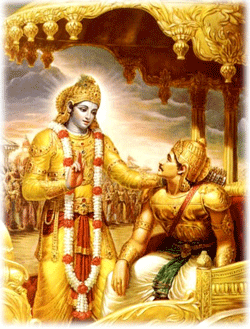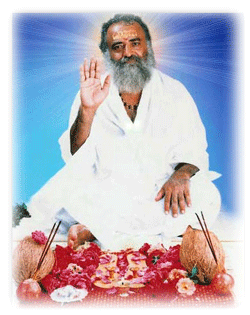An Insight Story
“We had a land problem with another villager and it was the 5th year that due to the dispute we weren’t able to work on the field, this dispute had taken the life of my elder niece as well. We spoke to woloswal (district attorney) many times and he said that take the case to Kabul – and sometimes said talk amongst yourselves and reach to some conclusions, we are busy with the ongoing insurgency don’t have the means to settle your disputes.
One day he sent someone maybe a judge to find out about our dispute and he also asked for so many papers and we said we don’t have any papers for this land, its our ancestors lands and we have lived here our whole lives. He said you couldn’t get use this land because you don’t have any documents. No one has documents for their lands in our village, its our lands from forefathers, we don’t need papers to prove this for us.
This year my brothers and I decided that we will seek the assistance of a Talib commander – so we went towards Ghazni and late in the evening located a well known commander near Qarabagh district and asked him to come and help us. He was such a generous man. He came and listened to our situation and then called the villager with whom we had the dispute and put the gun on his head and asked him to say the truth.
The man scared for his life, said that this piece of land doesn’t belong to him at all but he wanted to take advantage of having his land just next to us and especially that the canal comes directly to our fields. He even called in the witness who had witnessed that his father had sold that piece of land to my grand father many years ago. He asked for forgiveness and we all forgave him and the issue was closed. Since then we started planting back in our fields. The Talib commander solved a 5 yearlong dispute in one day. This is what we need”.
A family from a village in Jalrez, Wardak Province. ( December 2009)
Conflict
Disputes, such as the one described above, are typical in Afghanistan, but the mode of resolving the conflict is unique to Afghanistan. If one goes back historically to Afghanistan’s traditional roots, civil and even criminal matters have been resolved through community based structures, called Jirga’s and Shura’s. This has much to do with the absence of a central responsive government more than any other reasons. The past 30 years or more conflict has paralyzed the formal mechanisms of dispute resolution in Afghanistan. In any case, they were fragile and ineffective structures and were not even fair to the people of Afghanistan.
Judicial Reform Projects Afghanistan
Since 2001, millions of dollars were poured into various judicial reform projects. Although access to formal structures have improved a bit, still the system is not responsive nor effective, therefore communities especially in the rural areas prefer their original, quick and effective dispute resolution mechanisms.
Current Scenario
However, while analyzing the long-standing conflict of Afghanistan, one can see that the power dynamics of the actors in the communities has changed so that warlords hold the power. This power dynamic fueled by community power brokers enjoying a feudal culture, has contaminated these traditional structures with other features of conflict, from drugs to Taliban control. Local Jirga’s and Shuras are mostly dominated and driven by political factions, warlords, guns and money. Therefore, these structures cannot be called people’s structures for resolving disputes, but most of these, are platform for exercise of non-state actors monopoly over rural communities. Although there are a number of studies carried out in various provinces in Afghanistan to prove the effectiveness of these structures, there credibility as people’s consented decision making bodies still remain a valid question.
Understandably, after the national elections and establishment of an elected central government, such parallel structures need to be either abolished or merged into the formal judiciary system of the country. However, unless the insurgency and ongoing armed militancy is stopped it is hard to imagine that rural communities will get access to government judicial structures. In the cases that they do get to court it is unclear whether they will get proper resolutions from these government judicial systems. Since those systems are corrupt, ineffective and time consuming nature.
The government of Afghanistan attempted establishing connecting frameworks between the Traditional Dispute Resolution mechanisms and the formal judicial system since last year, calling for a National Policy on Traditional Dispute Resolution Mechanisms. But the fate of this policy is now unclear since there is a new Minister of Justice who is not in favour of bolstering the informal justice system.
In the past few years, debates around supporting and strengthening the Traditional Dispute Resolution mechanisms have dominated the rhetoric for justice in Afghanistan, especially by the international experts of the subject. Some of them disqualify any efforts to promote formal judiciary while others are advocating for linking both systems and increase the formal system’s efficiency. This discussion isn’t only about solving national or communal disputes but is about legitimacy of an Afghan state; promoting any parallel structures mean creating other state regimes eventually.
To solve the problem, the discussions on Traditional Dispute Resolution Mechanisms should not be categorized as a ‘rights issue’ only but as a structural challenge. While the biggest challenge of these structures that violate basic human rights of every individual remains much of concern. There have been a lot of studies that portray how women and children are sacrificed and oppressed by these structures. Just adding women into the Jirga’s system or providing them with trainings on human rights issues cannot alter such oppression.
Any rapid generalized analysis of Traditional Dispute Resolution mechanisms will reveal the fragility and inconsistence of these structures as well. The members are not the same every time in any village, nor they are trained in any of legal or investigative skills, or hardly a literate member can be found in the Jirga’s that can read and write. There are no set rules but decisions are taken contextual however, they do refer to previous decisions from the same place or other places if that meets the conditions of the context. The decision is usually made by the most powerful individual present in the Jirga and easily accepted by the rest and the victim at times the accused person has no voice in most of the instances but is considered to be embarrassed and silent in order to be forgiven.
What must be done?
Afghanistan needs institutions before any rights are promised to its citizens. Having a progressive constitution does not resolve community disputes and issues when even the parliament isn’t able to interpret the constitution objectively. Rule of law requires enforcing mechanisms that people can trust and only then state judiciary can be trusted by the local population. If the formal judiciary system is responsive enough, no other culture can prevent people from seeking justice, because it is the victim can understand the value and definition of justice.
The efforts should also be directed towards integrating the Traditional mechanisms into the state judiciary system with the paradigm of state being constitutionally precedent on the customary laws. However, no matter how ineffective the state judiciary, it should not be equally juxtaposed with the Traditional Dispute Resolution mechanisms, as the latter will easily replace the former.
Read more







